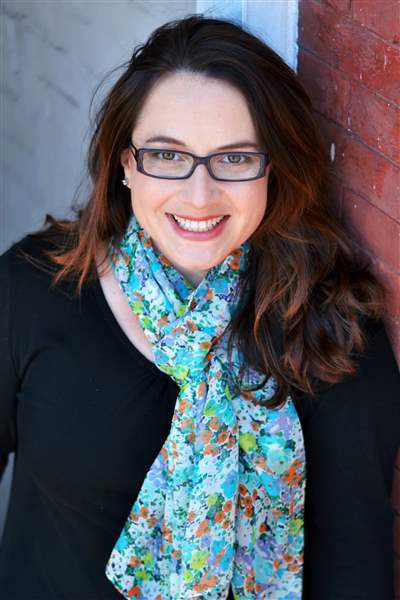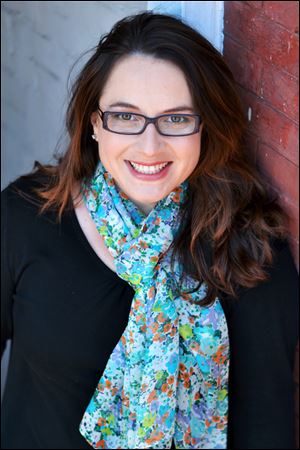
Toledo-based novel takes aim at the stars
7/19/2014
Lydia Netzer.

Lydia Netzer.
A novel that has Toledo in the title, with one of its main characters looking at the stars and trying to find the “gateway of God,” is sure to get covered on the Religion page.
Lydia Netzer’s How to Tell Toledo from the Night Sky is a story about religion, astrology, and astronomy, which “all used to be the same thing,” a character says. The book has plenty of quirky turns. The two main characters, Irene Sparks and George Dermont, were destined to be soul mates — but is their destiny only from the wishes of their mothers, Bernice and Sally, who met and became friends in the fifth grade? “‘Just imagine,’ said Sally. ‘Say you knew, when your kid was born, who they were going to marry? Think what you could do for them, to make that marriage awesome.’”
Or is there a greater love? What have the stars determined?
Irene and George were raised apart from each other from the time they were toddlers so they could meet romantically as adults. As the novel starts, they’re 29 and their scene is set for the fulfillment of their mothers’ dreams. But “real life” does intrude, and the conflicts between love, science, and religion — as well as among the characters, nearly all of whom have a modern or ancient religious aspect — give many twists to the telling.
Irene is a computational astrophysicist who just figured out how to make a black hole in a laboratory. “Irene was an empiricist. She believed in science, and math, and numbers. She did not believe in love, or any god,” the novel says.

George is a physicist, working on a theory that can align astrology with astronomy. “George Dermont was the bright young star of the cosmology department, the ‘it boy’ for concerns of the whole universe and beyond.”
They’re both on the staff of the Toledo Institute of Astronomy, the world destination for star research. Their scientific discoveries will change the world — and the world will change them. The people in their lives, terrestrial and spiritual, complicate their labors.
I liked reading the book in Toledo, where the story is set. There are fictional alterations, such as Toledo’s being a destination for astronomy and astrology, but I was wishing the book gave a bit more of the real Toledo atmosphere. It has a couple of recognizable place names, but it could be set in any city under the heavens—unless it really is the site of ancient Babylon, which George believes. The book flap biography says that Netzer “spent many nights, dark and bright, in Toledo;” she was born in Detroit and now lives in Virginia.
Netzer presents religion in a playful aspect, but it’s so sprawling in the many ways it’s present in the book that some refinement would have tightened the story. It’s hard to write about gods and goddesses and religion in numerous supporting layers and making it a public phenomenon when, as Netzer wrote, “Religion is private. It’s a private matter between you and the dozen or so deities who visit you at the most inopportune moments.”
How to Tell Toledo from the Night Sky is about skies and souls. Like the title, it might help some readers to distinguish infinity in their own sense of place.
The Toledo Public Library‘s Open Book series will host Lydia Netzer for a book discussion with questions and answers, and a book signing, Wednesday at 6:30 p.m. in the Huntington Room at the Main Library, 325 Michigan St.
Contact TK Barger @ tkbarger@theblade.com, 419-724-6278 or on Twitter @TK_Barger.